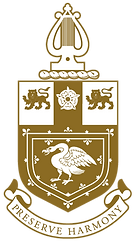An integral and popular part of the 1904 Loan Exhibition was the series of seventeen separate lectures (nine given by members of the Company) on the improvements and changes to Musical Instruments and/or the developments in the Art of Music over the 300 years since 1604. Presented in the Court Room of Fishmongers' Hall, the afternoon lectures were illustrated with demonstrations and performances and were a big success. H.A.F.Crewdson's 1950 Company Handbook states "...judging from the crowds who flocked daily to the Lecture Room, the Company may claim to have made a record in its mode of instructing an everyday musical audience."
The popularity of these lectures led many to request a repeat performance after the Exhibition had finished. However, given so many items used in the presentation of the lectures had by then been returned to its owners, it was not thought feasible. Instead, it was decided to bring all seventeen lectures together in a book called English Music which was published by The Walter Scott Publishing Company in 1906. Comprising over 500 pages, the book presents a transcript of each lecture, which was fortuitously supplied by Charles Letts (the Diary maker).

It also contains 115 illustrations, including engravings showing the old instruments and their mechanisms, fragments of the music played or sung and facsimiles of some of the old books which were referenced in the lecture.
The 'fortuitous' nature of the transcript is discussed in Richard Crewdson's Apollo. It provides an account written by Mr F.E.White (a dealer in old music):
"On the Friday afternoon, before the last day of the Exhibition, Mr Charles Letts, one of my customers, asked me if I thought the Committee would like to see his transcripts of the Lectures; he had had a shorthand writer there each day. I told him I could not interrupt the committee, who were then sitting as it happened. When I went into the room, Sir F Bridge and another member were conversing away from the Committee and I was able to tell him the Letts' message and he said it was the very thing they were talking about, and he told Sir Homewood Crawford my message, then turned to me and asked me to introduce him to Mr Letts. Sir Homewood Crawford said 'I am Chairman' and I had the pleasure of introducing both to Mr Letts. They had not had a shorthand writer, so Mr Letts' series of Lectures was of great use."
While the Company owns a number of copies of this book it has been commercially digitised and is available online. Click on the Button (right) to access.
: :

